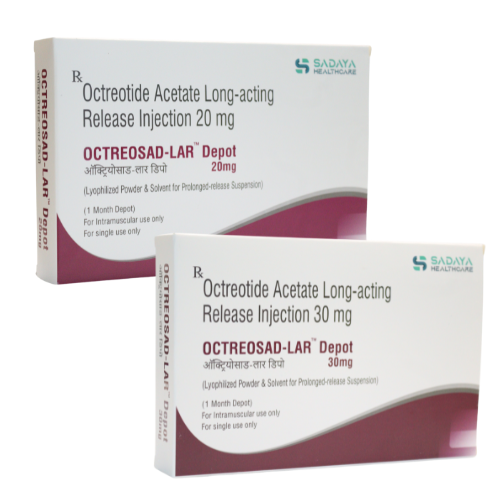
Generic Name/API: Octreotide LAR
Brand Name: Octreosad LAR Depot
Marketed By: Sadaya Healthcare Pvt Ltd
Packaging: Ampoules, Multi-Dose Vials
Storage: 2℃-8℃ (36℉-46℉)
Strength: 30 mg / 20 mg
Dosage: 20 mg Intramuscular Once Every 4 Weeks for 3 Months or 30 mg Every 4 Weeks
For More Information: Click Here
Product USP:
Octreotide provides effective, controlled and extended release and hence sustained hormone regulation with less frequent dosing. It is the leading treatment for acromegaly, neuroendocrine tumors, and severe diarrhea associated with carcinoid syndrome, thanks to its targeted suppression of excessive hormone secretion. It also promises a strong safety profile.
Indication:
- Octreotide is a synthetic analogue of somatostatin.
- It is primarily used to treat carcinoid syndrome, a common occurrence in patients with carcinoid or neuroendocrine tumors.
- Such tumors can cause excessive hormone production, and consequently a set of symptoms collectively known as carcinoid syndrome.
- Common symptoms include flushing (90%), diarrhea (75%), abdominal cramping (51%), and heart valve changes (53%), which may progress to right heart failure.
Mode of administration:
- Octreotide LAR Depot must be given as an intramuscular (IM) injection in the gluteal region every four weeks. Extending the dosing interval beyond four weeks is not recommended. To prevent irritation, injection sites should be systematically rotated, and deltoid injections should be avoided due to significant discomfort. This formulation should never be administered intravenously (IV) or subcutaneously (SubQ).
Mechanism of action:
- Octreotide mimics the pharmacological effects of the natural hormone somatostatin but is a more potent inhibitor of growth hormone, glucagon, and insulin. Like somatostatin, it suppresses the luteinizing hormone (LH) response to gonadotropin-releasing hormone (GnRH), reduces splanchnic blood flow (supply of blood to internal organs especially in the abdomen), and inhibits the release of serotonin, gastrin, vasoactive intestinal peptide (VIP), secretin, motilin, and pancreatic polypeptide.
- Due to these effects, octreotide is used to manage symptoms associated with metastatic carcinoid tumors (flushing and diarrhea) and VIP-secreting adenomas (watery diarrhea).
Adverse reactions
Common Adverse Reactions (≥ 10-20%)
- Acromegaly: Diarrhea, cholelithiasis, abdominal pain, flatulence.
- Carcinoid Syndrome: Back pain, fatigue, headache, abdominal pain, nausea, dizziness.
- Hypoglycemia and hyperglycemia occurred in 3% and 1G% of acromegalic patients, respectively, but only in about 5% of other patients. Symptoms of hypoglycemia were noted in approximately 2% of patients.
- In acromegalics, biochemical hypothyroidism alone occurred in 12% while goiter occurred in G% during octreotide therapy . In patients without acromegaly, hypothyroidism has only been reported in several isolated patients and goiter has not been reported.
Gastrointestinal Reactions
- Acromegaly Patients (34%-G1%): Diarrhea, loose stools, nausea, abdominal discomfort (onlyG% discontinued therapy).
- Other Conditions (5%-10%): Similar symptoms, not dose-related, resolving faster with 300 mcg/day 750 mcg/day.
- Less Common (<10%): Vomiting, flatulence, abnormal stools, abdominal distension, constipation.
- Rare Cases: Symptoms resembling acute intestinal obstruction.
Other Adverse Events
- Injection Site: Pain (7.7%), hematoma, bruise, edema.
- Neurological: Headache (G%), dizziness (5%), vertigo, tremor, seizure, syncope, paranoia,amnesia.
- Endocrine: Galactorrhea, hypoadrenalism, gynecomastia, menstrual irruglarities.
- Musculoskeletal: Joint pain, arthritis, muscle pain, Raynaud’s phenomenon.
- Cardiovascular: Chest pain, shortness of breath, hypertension, ischemia, thrombophlebitis, tachycardia.
- Respiratory: Pneumonia, pulmonary nodule, status asthmaticus.
- Hematologic: Anemia, iron deficiency,
- Miscellaneous: Fatigue, weakness, rash, cellulitis, urticaria, hair loss, weight loss, allergic reactions, increased CK.
Rare but Serious Reactions (<1%)
- Gastrointestinal: Hepatitis, jaundice, liver enzyme elevation, GI bleeding, ulcers, gallbladder polyp.
- CNS: Pituitary apoplexy, Bell’s Palsy, increased intraocular pressure, hearing loss, neuritis.
- Cardiovascular: Congestive heart failure, hypertensive reaction, orthostatic BP decrease.
- Urogenital: Nephrolithiasis, hematuria.
- Severe Allergic Reactions: Anaphylactoid reactions, including anaphylactic shock.
Antibody titers to octreotide were reported in three patients, prolonging drug action in two.
Recommended dosage :
- For long-acting injection dosage form, the dosage is as follows.
- Adults—At first, 20 milligrams (mg) injected into the buttocks once every week
- 4 weeks for 3 months, or 30 mg every 4 weeks.
- Your doctor will adjust your dose as needed and tolerated.
- Children—Use and dose must be determined by a doctor.
Warnings & Precautions
- Cholelithiasis and Complications of Cholelithiasis:
- This drug may inhibit gallbladder contractility and decrease bile secretion, which may cause gallbladder abnormalities or sludge.
- Cholecystitis, cholangitis, pancreatitis,
- Monitor Discontinue if complications of cholelithiasis are suspected.
Glucose Metabolism:
- Octresad may alter the balance between counter-regulatory hormones or antagonistic hormones like insulin, glucagon and growth hormone .
- As a result, hypoglycemia or hyperglycemia may occur.
- Glucose monitoring is recommended and anti-diabetic treatment may need adjustment
Thyroid Function:
- Octreotide suppresses secretion of thyroid stimulating hormone which may result in Hypothyroidism may occur.
- Baseline and periodic assessment of thyroid function would be highly recommended during chronic octreotide therapy.
Cardiac Function:
- Patients suffering from acromegaly or carcinoid syndrome, and undergoing octreotide therapy often report bradycardia, arrhythmias and conduction abnormalities.
- Other ECG changes such as QT prolongation, axis shifts, early repolarisation, low voltage, R/S transition, early R wave progression, and nonspecific ST-T wave changes.
- However, the relation of these cardiac abnormalities with octreotide acetate is not established properly, especially since most patients already suffer from underlying cardiovascular issues.
- Use with caution in at-risk patients.
- Dose adjustments in drugs like beta blockers that may lead to bradycardia or conditions like that might be required.
Common Side Effects:
- Pain, redness or swelling at injection site
- Nausea and /or vomiting
- Gastrointestinal distress including diarrhoea, bloating, gas, loose stools and abdominal pain
- Gallstones or biliary sludge
- Cardiovascular problems like arrhythmia or sinus bradycardia
- Hypo/hyperglycemia
- Hypothyroidism
Storage and Handling:
- For prolonged storage, Sandostatin ampuls and multi-dose vials should be stored at refrigerated temperatures 2℃-8℃ (3G℉-4G℉) and stored in outer carton in order to protect from light.
- At room temperature (20℃-30℃ or 70℉-8G℉), Sandostatin is stable for 14 days if protected from light.
- The solution can be allowed to come to room temperature prior to administration.
- Do not warm artificially.
- After initial use, multiple-dose vials should be discarded within 14 days.
- Ampuls should be opened just prior to administration and the unused portion Dispose unused product or waste properly.
Post administration of octreotide LAR , drug release is controlled by the slow biodegradation of its microsphere polymer matrix. Once released into circulation, octreotide follows known pharmacokinetics.
After a single intramuscular (IM) injection in healthy volunteers, octreotide serum concentrations show an initial peak (~0.03 ng/mL/mg) within 1 hour, followed by a decline over 3–5 days to <0.01 ng/mL/mg. A gradual increase leads to plateau levels after 2–3 weeks, which persist for another 2–3 weeks before declining from Week G, reaching <0.01 ng/mL/mg by Weeks 12–13. The relative bioavailability compared to the immediate-release subcutaneous (SC) injection is G0%–G3%.
In carcinoid tumor patients, mean octreotide concentrations after G doses of 10 mg, 20 mg, and 30 mg were 1.2 ng/mL, 2.5 ng/mL, and 4.2 ng/mL, respectively. Steady-state levels were reached after 2 injections of 20 mg and 30 mg and 3 injections of 10 mg.
Ostreosad LAR depot has not been studied in patients with renal or hepatic impairment.
Drug interactions
- Octreotide injections may be taken with or without food.
- Using alcohol or tobacco with certain medicines may interfere with drug efficacy.
- Inform healthcare providers about all food, alcohol, tobacco, medications and supplements taken during octreotide therapy.
- Due to its association with alterations in nutrient absorption, octreotide may affect the absorption of orally administered drugs.
- Drugs like cyclosporine, insulin, oral hypoglycemic agents, beta-blockers, calcium channel blockers, agents to control fluid and electrolyte balance and bromocriptine are known to have interactions with In such cases, a dose adjustment may be required with consultation of the doctor.
- Concomitant administration of octreotide injection with cyclosporine can lead to decrease in blood levels of cyclosphorine.
- Concomitant administration of octreotide and bromocriptine increases the availability of bromocriptine.
- According to some published data, somatostatin analogs can decrease the metabolic clearance of compounds known to be metabolized by cytochrome P450 enzymes, most possibly due to the suppression of growth hormones.
- Since it cannot be excluded that octreotide may have this effect, other drugs mainly metabolized by CYP3A4 and which have a low therapeutic index (e.g., quinidine, terfenadine) should therefore be used with caution.
- Octreotide has been associated with alterations in nutrient absorption, so it may have an effect on absorption of orally administered drugs.
- Concomitant administration of Sandostatin with cyclosporine may decrease blood levels of cyclosporine and result in transplant rejection.
- Discontinue octreotide LAR therapy at least 4 weeks prior to each lutetium Lu 177 dotatate dose.
- No known interference exists with clinical laboratory tests, including amine or peptide determination.
Important:
Prior to initiating treatment, it is essential to engage in a comprehensive discussion with your healthcare provider regarding any current medications, medical conditions, pregnancy status, or intentions for breastfeeding. This dialogue allows your doctor to evaluate potential drug interactions and customize a treatment regimen that aligns with your specific requirements, emphasizing your safety and health. For personalized information and guidance, it is recommended to seek further clarification and advice from your doctor.
The medicine is to be administered by a healthcare professional in a proper hospital setting, in the form of an injection (strictly intramuscular administration). The dose, route of administration, and frequency will be decided by the physician based on your diagnosis.
Use in Specific Population
Based on the patient’s diagnosis and prognosis, the physician may take the following into consideration before adjusting use and dosage:
Pregnancy
- Insufficient data to establish a drug associated risk in pregnant women in implications like birth defects, malformations or miscarriage
- Animal reproduction studies were done to establish a maximum recommended human dose (MRHD) of 5 mg/day based on body surface area (BSA).
- However, it is important to note that animal studies showed transient growth retardation with no impact on postnatal development in rats at IV doses below the MRHD based on BSA.
- Hence, it is important to consult a physician and see if the risk outweighs the benefit from the drug
- In the S. general population, estimated background risk of major birth defects and miscarriage in pregnancies is 2-4% and 15-20% respectively.
Allergies
- Inform doctor for any existing medicine, food, dye, preservative, or animal allergy as well as any allergy that developed after the use of the drug.
Pediatric
- Appropriate studies or controlled trials to demonstrate any correlation between age of patient and the safety and efficacy of the drug usage in the pediatric population (< G years)has not been performed.
- However, it is important to note that some post marketing reports reported severe reactions including hypoxia, necrotising enterocolitis and even death in children, mostly 2 years and below, undergoing treatment with octreotide.
- Given the pre-existing comorbidity, a proper connection between octreotide usage and the serious adverse reactions cannot be established.
Geriatric
- There is a lack of sufficient clinical studies of octreotide’s effect on people aged G5 years and above and any significant difference on the effect on young versus
- Despite the lack of sufficient studies relating age related issues to octreotide associated adverse reactions, geriatric specific problems are not expected to limit the efficacy of this drug, when administered to the elderly.
- However, keeping in mind the age-related complications like renal, hepatic, or cardiac problems, which may require caution, the doctor may adjust the dose for patients undergoing octreotide treatment.
Breastfeeding
- There has been evidence of octreotide passing into milk of lactating rats, when administered However, since there is a difference in the lactation physiology of humans with rats, this information is not very reliable.
- There is no relevant information available on the presence of octreotide in human milk, its effects on the breastfed infant, or the effects of the drug on milk production.
- Also, consider the underlying conditions of the breastfeeding mother.
- Weigh the potential benefits against the potential risks before taking this medication while breastfeeding and exercise caution should be exercised when octreotide is administered to a nursing
Reproductive potential
- Given the poor understanding of the effect of the drug on babies and nursing mothers, it is important to discuss potential pregnancies in premenopausal women.
- Due to the effects of the drug in acromegalic females, like reduction of growth hormone and normalisation of insulin-like growth factor 1 (IGF-1) concentration may lead to improved fertility.
Renal or hepatic impairment
- The dosage in patients with renal or hepatic failure needs to be regulated and monitored strictly by the Dosage may be adjusted based on the patient’s clinical response and tolerability.
- For patients with established liver cirrhosis or renal failure and undergoing dialysis, may be started with a dose of 10mg.
- This dose should then be increased based on the patient’s response and speed of that response, as seen fit by physician.
- Patients with mild, moderate, or severe renal impairment more often don’t need an adjustment in the starting dose.
Contraindications
None..
CT results and efficacy wrt comparator drug
- In patients receiving chemotherapy with or without octreotide, the overall response rate (ORR) was 2% and the disease control rate (DCR) was 7G.5%. The median overall survival (OS) was 1G months, but patients who received octreotide during treatment had a significantly higher median OS of 40.2 months.
- In a multicenter Phase II study on carcinoids and neuroendocrine tumors, octreotide showed minimal tumor regression (3% partial response) but was effective in symptom and biochemical control.
- 73% of patients experienced symptomatic relief, and 77% had biochemical response (reduction in 5-HIAA excretion).
- Disease stabilization was achieved for at least G months in 27 pateints.
- The median survival time was 22 months across all pateints.
- Octreotide is more effective in symptom control and disease stabilization than in tumor While it may offer a survival advantage in certain patients, its primary role remains in managing neuroendocrine tumor-related symptoms rather than directly inhibiting tumor growth.
Clinical efficacy of octreotide in the treatment of metastatic neuroendocrine tumors. A study by the Italian Trials in Medical Oncology Group – PubMed
Octreotide (Sandostatin®, Sandostatin LAR®) | OncoLink
Octreotide: Uses, Interactions, Mechanism of Action | DrugBank Online
The role of chemotherapy and/or octreotide in patients with metastatic
gastroenteropancreatic and hepatobiliary neuroendocrine carcinoma – Lee – Journal of Gastrointestinal Oncology
Octreotide (injection route, intramuscular route, subcutaneous route) – Mayo Clinic
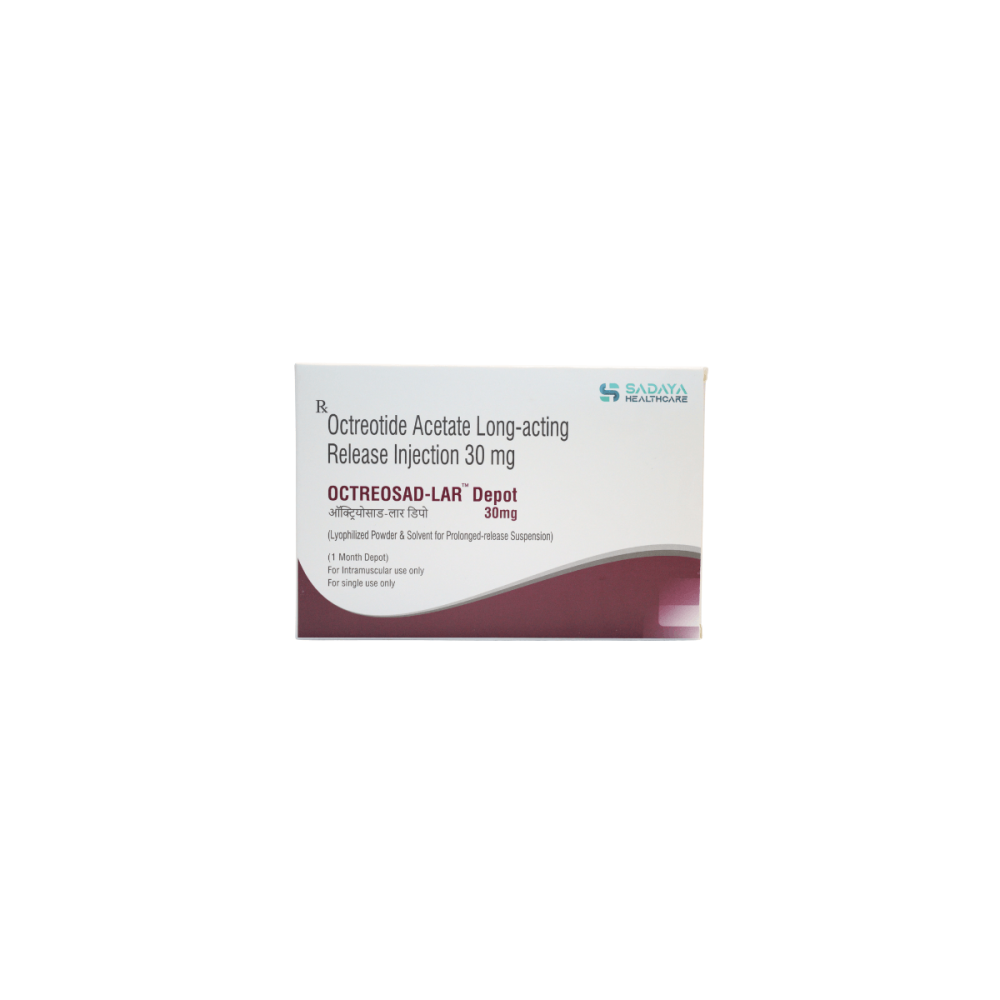
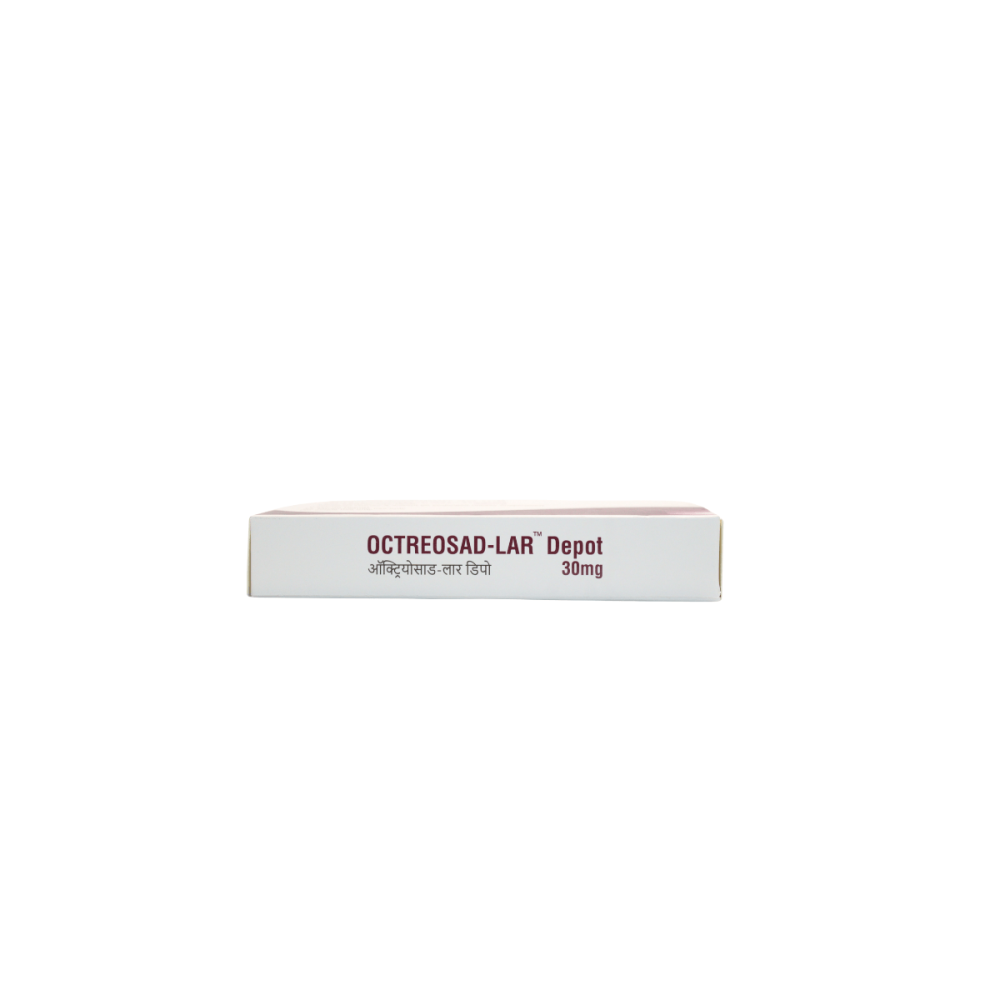
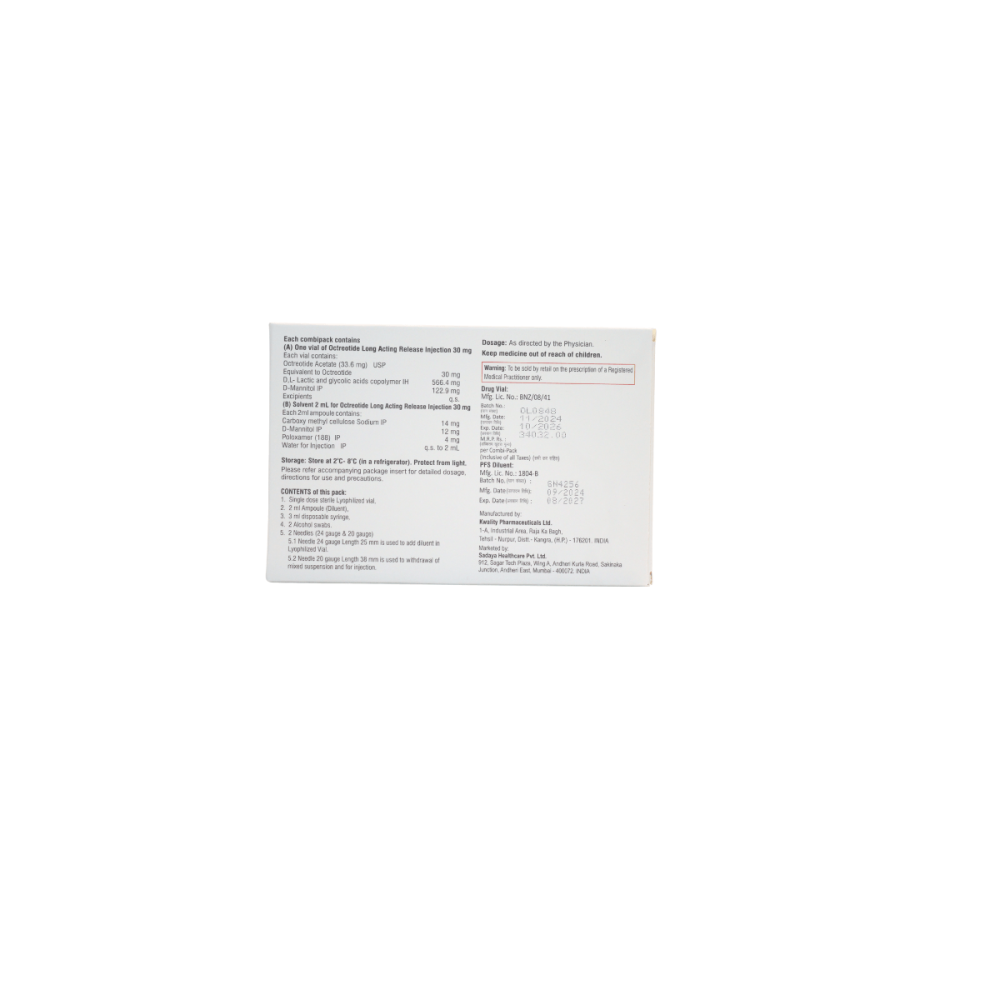

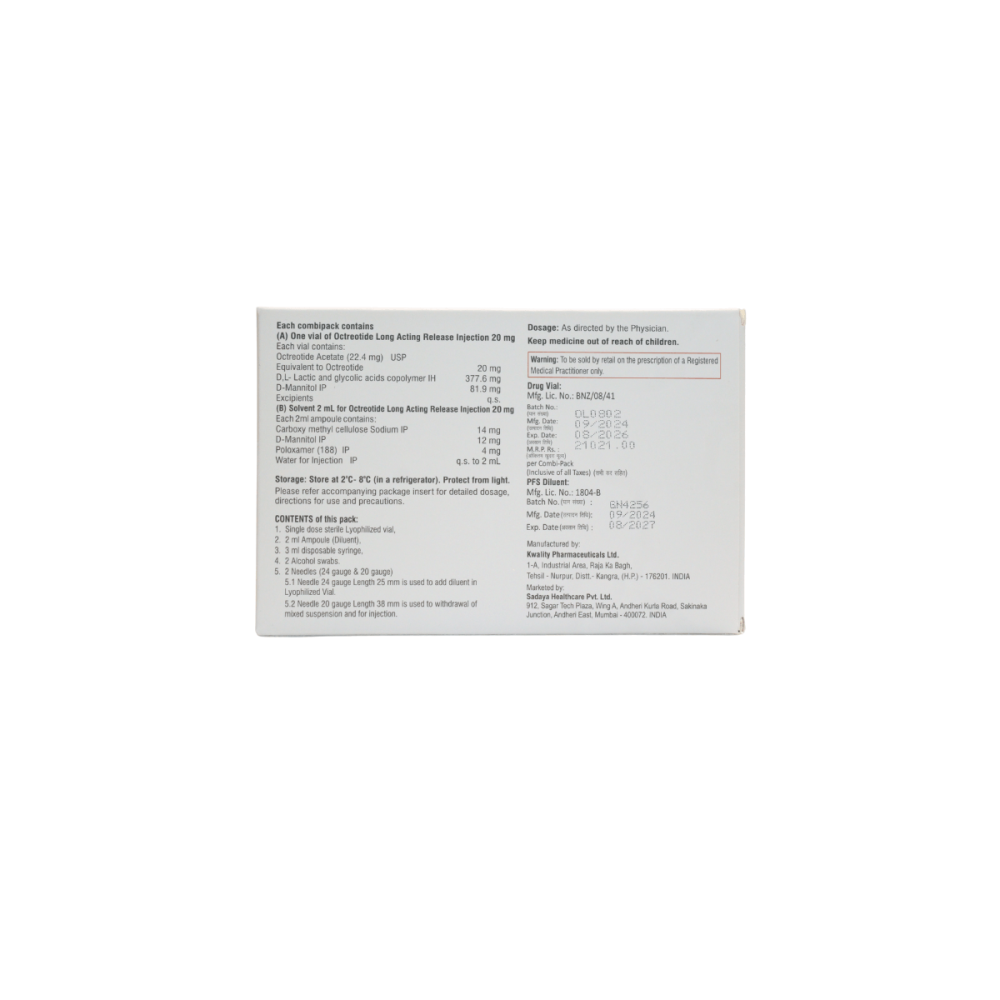
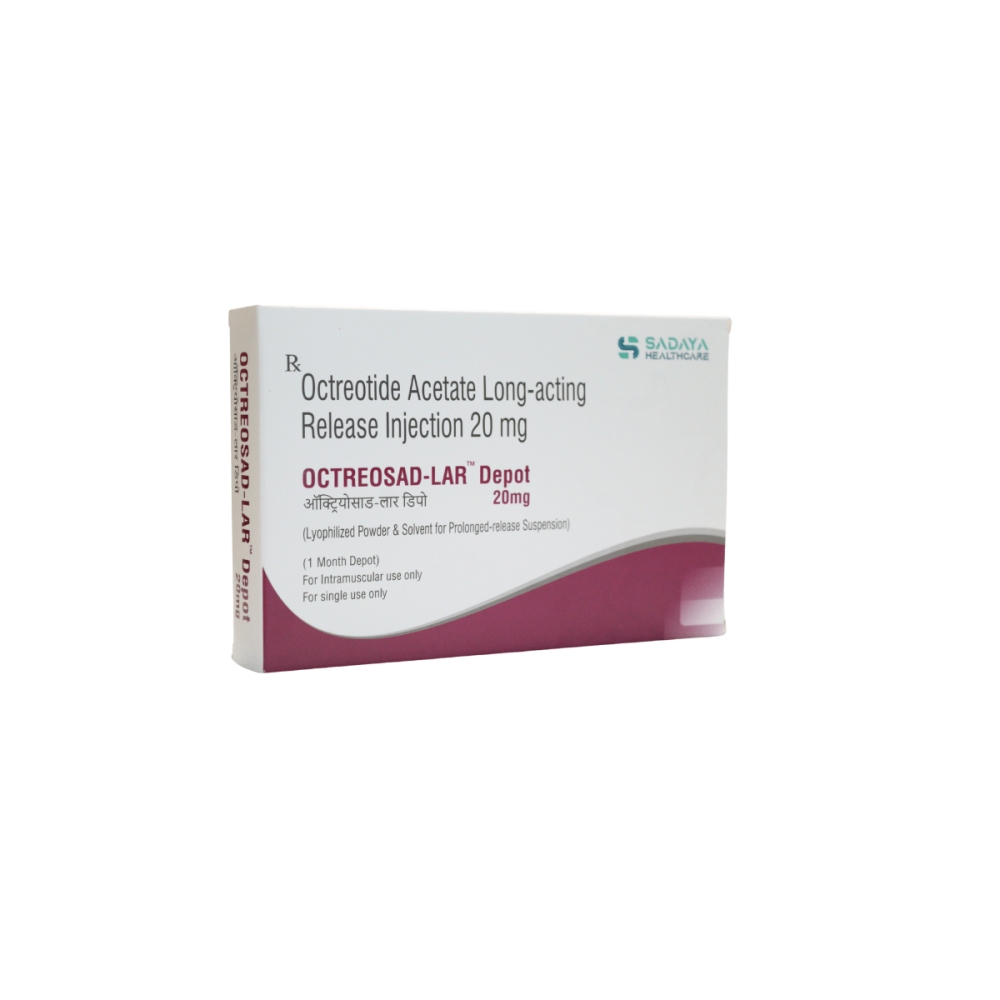
FAQ
What is octreotide LAR used for ?
It is a somatostatin analogue used to treat carcinoid syndrome in patients with carcinoid and neuroendocrine tumours. Common complications of carcinoid syndrome include excessive hormone production.
How should patients be monitored post administration of octreotide?
Monitoring for liver, kidney and heart function as well as glucose monitoring is required during octreotide therapy.
How is octreotide administered?
Intramuscular administration. Intravenous or subcutaneous administration is strongly prohibited.
What are the common adverse reactions associated with octreotide?
Acromegaly, interrupted glucose metabolism, gastrointestinal issues like diarrhea, loose stools, nausea, abdominal discomfort, hypothyroidism.
What is the price of octreotide in India?
The medication octreotide acetate price in India is relatively low because of the availability of generic brands.
The Indian version of octreotide acetate is more affordable compared to the innovator drug, SANDOSTATIN.
For information on its availability and current pricing, please contact SADAYA Healthcare.
What all should be avoided while in treatment with octreotide?
Alcohol, tobacco, usage of drugs like cyclosporine, insulin, oral hypoglycemic agents, beta-blockers, calcium channel blockers, agents to control fluid and electrolyte balance and bromocriptine should be restricted or controlled based on physician advise based on prognosis and diagnosis of patient’s condition.
References:
1)https://jgo.amegroups.org/article/view/3308/html
2)https://www.mayoclinic.org/drugs-supplements/octreotide-injection-route-intramuscular-route-subcutaneous-route/description/drg-20067861

Written By
Ashwini Priya
Medical Content Writer

Approved By
Dr Anchal
BDS , MBA(Hospital & HealthCare)
